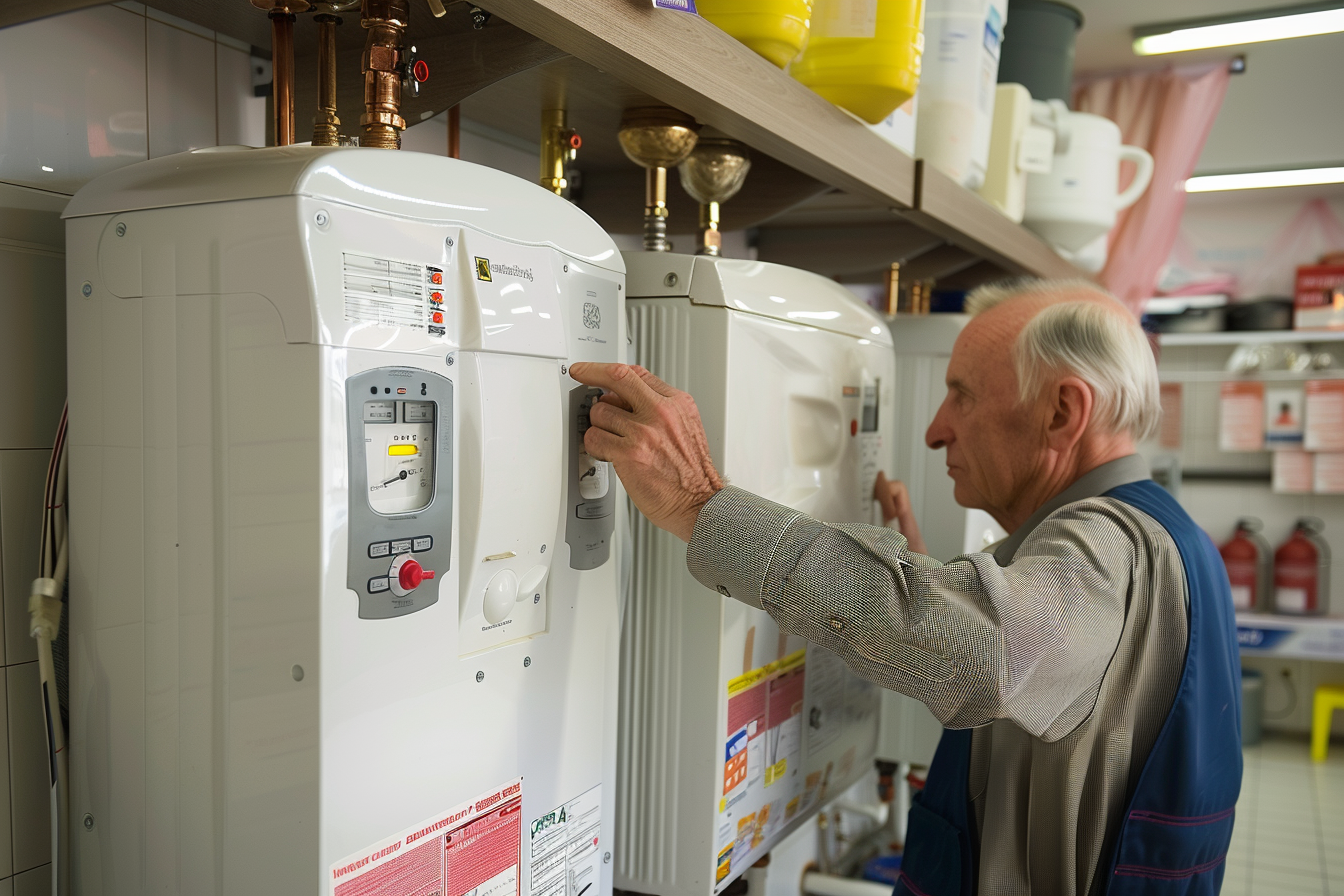Water Heater Comprehensive Guide
Hot water production is a heat transfer process in which energy is used to heat water to a temperature above its initial temperature. Typical household uses for hot water include cooking, cleaning, bathing, and heating. Choosing the right water heater is important, as different types of water heaters offer different functions and have varying capacities.

Water heating represents one of the largest energy expenses in most American households, accounting for approximately 18 percent of home energy costs. Understanding the different technologies and their operational characteristics helps homeowners select systems that balance performance, efficiency, and budget considerations.
What is a water heater?
A water heater is an appliance designed to raise the temperature of water for domestic use, including bathing, cleaning, cooking, and space heating. These systems work by transferring energy to water through various mechanisms. Traditional storage tank water heaters maintain a reservoir of hot water, typically ranging from 20 to 80 gallons, kept at a preset temperature through gas burners or electric heating elements. The heated water remains ready for use, with cold water entering the tank as hot water is drawn out. Tankless or instantaneous water heaters operate differently by heating water on demand as it flows through the unit, eliminating the need for storage. Heat pump water heaters use electricity to transfer heat from surrounding air or ground sources to the water, rather than generating heat directly. Solar water heaters capture energy from sunlight through collectors, often supplemented by conventional heating methods during periods of insufficient solar radiation. Each technology offers distinct advantages depending on household size, usage patterns, climate conditions, and energy priorities.
Is it worth buying an instantaneous water heater?
Instantaneous water heaters, also called tankless or on-demand systems, provide hot water only when needed, eliminating standby energy losses associated with storage tanks. These units can be 24 to 34 percent more energy efficient for homes using 41 gallons or less of hot water daily, and 8 to 14 percent more efficient for homes using around 86 gallons per day. The financial viability depends on several factors including installation costs, energy rates, and usage patterns. Initial purchase and installation expenses for tankless systems typically exceed those of conventional tank heaters, often ranging from two to three times higher due to specialized venting requirements, gas line upgrades, or electrical system modifications. However, tankless units generally last longer than storage heaters, with lifespans exceeding 20 years compared to 10 to 15 years for tank models. Households with consistent, high hot water demand may find limited advantage, as multiple simultaneous uses can exceed the flow rate capacity of a single unit. Conversely, smaller households or those with intermittent usage patterns often realize substantial energy savings. The decision should account for local utility rates, available fuel types, installation complexity, and whether the home can accommodate the specific infrastructure requirements of tankless technology.
What are the disadvantages of a heat pump water heater?
Heat pump water heaters achieve remarkable efficiency by moving heat rather than generating it directly, potentially reducing water heating costs by up to 60 percent compared to standard electric resistance heaters. Despite these advantages, several limitations warrant consideration. These systems require substantial space, typically needing at least 1,000 cubic feet of surrounding air volume and clearances of several feet in all directions for proper air circulation. Installation in confined spaces like small closets proves impractical and significantly reduces efficiency. Heat pump water heaters extract warmth from ambient air, which can cool and dehumidify the surrounding space. This characteristic benefits homes in warm, humid climates but may increase heating costs in colder regions where the system draws heat from already conditioned indoor air. The units operate more slowly than conventional electric heaters, with recovery times that may challenge households with high simultaneous hot water demands. Initial costs substantially exceed standard electric water heaters, though federal tax credits and utility rebates often offset portions of this premium. Heat pump systems also generate operational noise from fans and compressors, which may concern homeowners sensitive to sound or those installing units near living spaces. Performance decreases in cold environments, with efficiency dropping when ambient temperatures fall below 40 degrees Fahrenheit, potentially requiring supplemental electric resistance heating during winter months in unheated installation locations.
How do you use an instantaneous water heater?
Operating an instantaneous water heater involves straightforward principles, though optimal use requires understanding flow rate limitations and temperature management. When a hot water tap opens anywhere in the home, water begins flowing through the tankless unit, triggering a flow sensor that activates the heating elements or gas burner. The system rapidly heats water as it passes through a heat exchanger, delivering hot water at the preset temperature within seconds. Users should understand that flow rate determines the temperature rise these units can achieve. A typical residential tankless heater provides 2 to 5 gallons per minute, with gas models generally offering higher flow rates than electric versions. Running multiple hot water fixtures simultaneously divides this capacity, potentially reducing the temperature at each outlet. In colder climates where incoming groundwater temperatures drop significantly, the unit may struggle to achieve desired temperatures during peak demand unless properly sized. Most systems feature digital controls allowing temperature adjustments, though setting temperatures above 120 degrees Fahrenheit increases scalding risk and energy consumption. For optimal performance, consider staggering high-demand activities like showering and dishwashing, or install multiple units dedicated to specific areas or appliances in larger homes. Regular maintenance, including periodic descaling in areas with hard water, preserves efficiency and extends equipment life. Some advanced models offer remote controls and smartphone connectivity for monitoring usage patterns and adjusting settings.
Cost Considerations and Provider Comparisons
Understanding the financial aspects of different water heating technologies helps homeowners make informed purchasing decisions. Costs vary based on system type, capacity, energy source, installation complexity, and regional factors.
| System Type | Typical Cost Range | Energy Source | Average Lifespan |
|---|---|---|---|
| Storage Tank | $800 - $1,500 | Gas/Electric | 10-15 years |
| Tankless | $1,500 - $3,500 | Gas/Electric | 20+ years |
| Heat Pump | $1,800 - $3,500 | Electric | 13-15 years |
| Solar | $3,000 - $7,000 | Solar/Backup | 20+ years |
Prices, rates, or cost estimates mentioned in this article are based on the latest available information but may change over time. Independent research is advised before making financial decisions.
Beyond initial purchase prices, ongoing operational costs significantly impact total ownership expenses. Natural gas typically costs less than electricity per unit of energy in most American regions, making gas-powered systems more economical to operate despite sometimes higher installation costs. Heat pump technology, while expensive initially, offers the lowest operating costs among electric options. Solar systems provide the greatest long-term savings potential in sunny climates with high electricity rates, though weather dependence and backup system requirements complicate cost calculations. Installation expenses vary considerably based on existing infrastructure, with retrofits sometimes requiring extensive modifications to venting, gas lines, or electrical systems. Obtaining multiple quotes from licensed contractors and verifying eligibility for federal tax credits, state rebates, and utility incentive programs helps optimize the financial equation.
Conclusion
Selecting an appropriate water heating system requires balancing efficiency, capacity, installation constraints, and budget considerations. Storage tank heaters offer simplicity and lower initial costs, while tankless systems provide space savings and potential energy reductions for suitable households. Heat pump technology delivers exceptional efficiency in appropriate climates and installation locations, despite higher upfront investments and space requirements. Understanding how each technology operates, its inherent advantages and limitations, and the realistic costs involved empowers homeowners to choose systems aligned with their specific circumstances, usage patterns, and long-term objectives.




